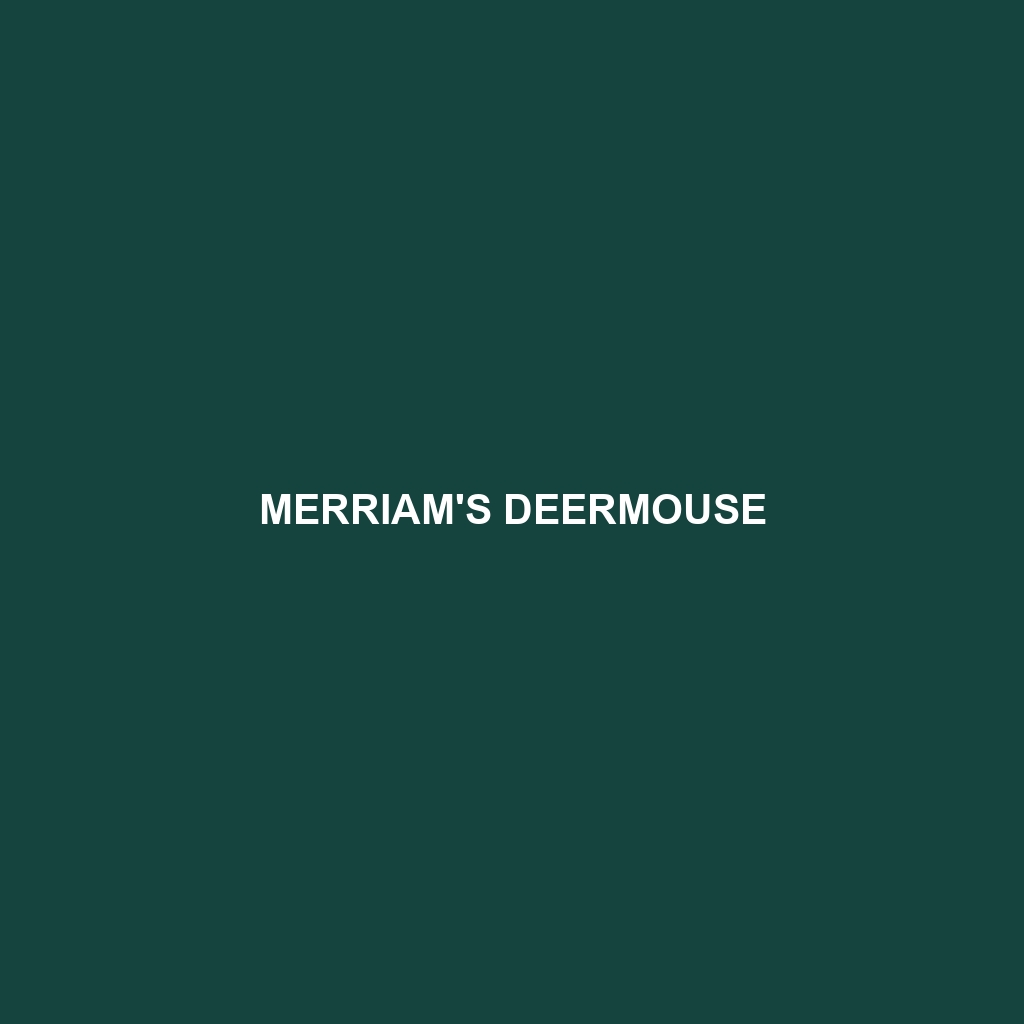Mexican Deermouse (Scientific Name: Peromyscus maniculatus)
Habitat
The Mexican Deermouse is primarily found in various regions across Mexico and parts of the southwestern United States. They thrive in diverse habitats, including grasslands, shrublands, and forests, particularly in environments with ample cover such as brush and rock piles. This adaptability allows them to occupy numerous ecological niches, making them a common sight in their native regions.
Physical Characteristics
Mexican Deermice are small rodents, typically ranging from 7 to 10 inches in total length, including the tail. Their fur is generally soft and variable in color, often presenting a mixture of browns, grays, and whites, which provides excellent camouflage in their natural habitat. They have large ears, a pointed snout, and long, agile tails that help them balance while navigating through their environment. Their distinctive fur pattern, with lighter underparts and darker upperparts, makes them easily identifiable.
Behavior
Mexican Deermice are primarily nocturnal, showing heightened activity during the night when they forage for food. They are known for their agility and ability to climb, often seen scurrying through shrubs and trees. Their social structure is variable; they can be solitary or live in small family groups. The Mexican Deermouse is also known for its territorial behavior, particularly in males, who will patrol and defend their home ranges against intruders.
Diet
The diet of the Mexican Deermouse mainly consists of seeds, fruits, nuts, and invertebrates. They are opportunistic feeders, often foraging for food on the ground during nighttime. This mouse plays a crucial role in seed dispersal within its ecosystem, which can promote plant growth and diversity.
Reproduction
Mexican Deermice breed throughout the year, with peak activity during the warmer months. A female may produce several litters each year, typically consisting of 3 to 7 offspring per litter. After a gestation period of about 24 to 30 days, the young are born blind and hairless, gradually developing independence over the following weeks. Parental care is primarily provided by the female, who ensures the survival of her young during their vulnerable early stages.
Conservation Status
Currently, the Mexican Deermouse is classified as Least Concern according to the IUCN Red List. However, habitat destruction and fragmentation pose potential threats to their populations. Continued monitoring is essential to ensure that they do not become vulnerable in the future.
Interesting Facts
The Mexican Deermouse is notable for its ability to adapt to urban environments, often being found in gardens and parks. Additionally, its keen senses and agility make it a favorite among researchers studying rodent behavior and ecology. In laboratory settings, they are frequently used as a model organism due to their rapid reproduction and small size.
Role in Ecosystem
The Mexican Deermouse plays a vital role in its ecosystem as both a prey species for various predators and as a seed disperser. Through their foraging habits, they contribute significantly to the health of the ecosystems they inhabit by aiding in plant propagation and cycling nutrients within the soil. Their interactions with the surrounding environment make them an essential component of wildlife communities.
